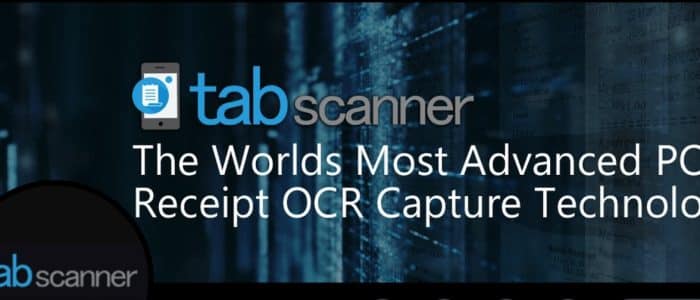Last Updated on January 8, 2025
Whether you’ve diligently kept abreast of recent OCR developments or are a total greenhorn when it comes to optical character recognition, it’s fair to say that the technology has the power to revolutionise expense management.
Long resigned to forecasted innovation – even a technology that our children may find integral to managing their finances – performing an OCR scan to calculate your expenses is on the cusp of breaking through to becoming technology that the 7.4 billion of us around the globe will find indispensable.
This is no truer than of accountancy and bookkeeping practices. OCR has the potential to revolutionise expense management for large-scale commercial organisations and people alike.
However, before we dive into the obvious benefits of having a mobile device with inbuilt check scanner API, let us take you on a quick tour of OCR through the ages.
The History of OCR Technology
Believe it or not, OCR is not a new technology. It has been leveraged since the 20th Century to support a wealth of products and services, including telegraphy and reading aids. One of the first known uses of OCR was the invention of the Octophone in 1913.
As one of the earliest known applications of sonification (the use of non-speech audio to express information or conceptualize data), the octophone scanned text from books or newspapers, generating musical tones which correlated to letters. The OCR check performed by the octophone is considered a significant milestone in helping the visually impaired read and understand information – and is up there with the invention of braille.
In 1966, IBM launched its 1297 optical reader – the first scanner capable of identifying handwritten numbers and characters, including machine-printed credit card numbers and cash register rolls. Information recorded by sales clerks or delivery drivers could be directly scanned into a computer, reducing manual date entry and streamlining efficiencies.
Fast forward to the turn of the twenty-first century, Adobe Acrobat and Microsoft launched free OCR scanning software, allowing users to upload paper documents and convert them into editable pdfs. Today, OCR scanning apps are becoming increasingly prevalent on mobile devices, with customers impressed by the accuracy and reliability of the software in helping them to manage their expenditure.
So, what’s apparent is that OCR technology has been embedded into the fabric of our lives for longer than we may think. This is hardly surprising when you consider the supreme benefits that the technology can offer people and businesses. Accountancy and bookkeeping practices can be greatly streamlined – making managing finances a breeze.
Here’s a look at the core reasons why employing OCR technology will add significant value to your accountancy and bookkeeping practices.
OCR is Time-Saving
It goes without saying that employing an OCR receipt scanner API will save you time, but we bet you’re not aware of how significant your potential time savings can be!
Research into OCR and receipt capture has found that employing the technology, as opposed to manual data entry, could save you as much as 75% on time and cost. This frees up significant time for businesses, allows them to save on costly staffing overheads and invest resources into growing monthly revenue streams and servicing customers.
OCR Technology is Environmentally Friendly
Performing an OCR check allows businesses to use the cloud to save documents – they’re also easily accessible by several devices, at any time. Not only does this de-clutter the office, businesses do not need to print vast amounts of paper documents to distribute among employees and prep for meetings.
The lack of paper documentation is a much more environmentally-friendly approach to businesses – and reflects the current evolution of commercial enterprises – with more and more companies placing significant emphasis on environmental sustainability.
Employee Engagement
No one wants to work in a place that demands they devote hour upon hour filling out and collating paperwork. This isn’t fun, nor is it a productive use of your time. OCR has the potential to completely eradicate time-consuming paperwork.
Let’s say that you oversee gathering, managing and reimbursing travel expenses for the large multi-national corporation. With twenty, fifty or even hundreds of employee expenses to process each month, speed and accuracy are paramount. Having access to an OCR check scanner API, whether as software or a bill scanning app, will save employees mountains of time and make their role so much easier.
Mistakes Won’t Be Made When Using OCR
Manually typing expenses into a spreadsheet can lead to mistakes. Regardless of your bookkeeping experience or level, we’re not immune from making the odd mistake here and there. The problem is that making a numerical mistake can have serious ramifications.
Performing an OCR scan of receipts will completely remove the concern of making any human errors. This gives businesses peace of mind that every transaction will be efficiently processed and that all reimbursements are accurately recorded.
And there you have it, how using OCR technology will add significant value to your accountancy and bookkeeping practices. If you’re in any doubt, why not trial the technology for a month and record the difference – you may just wonder how you ever got along without it!





